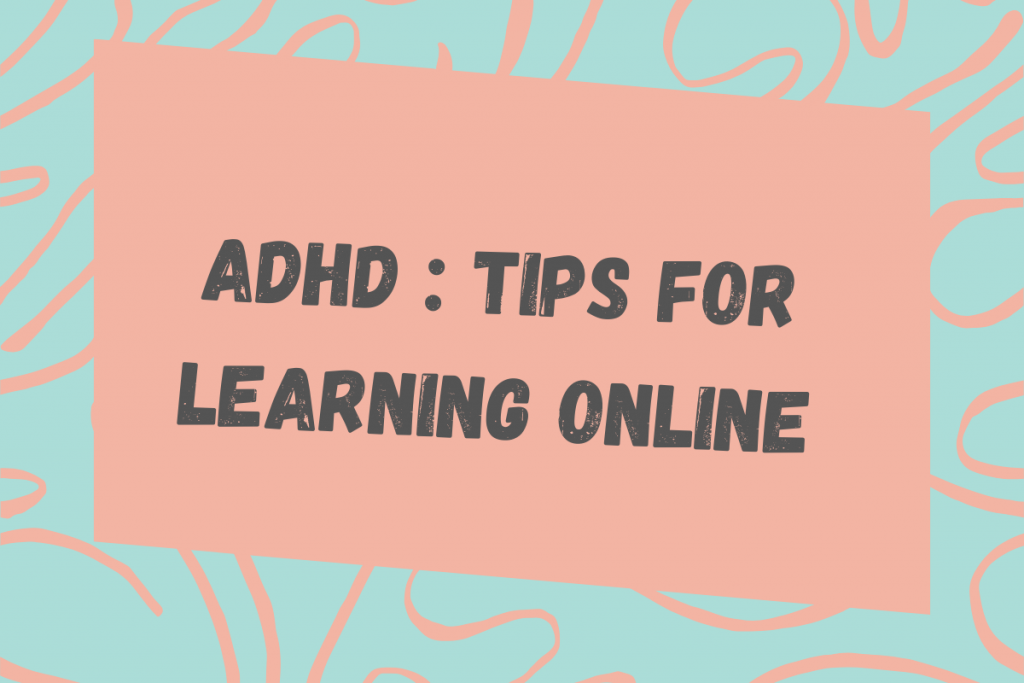
ADHD’s effects can be really challenging for kids in the classroom, where they need to sit still, listen to teachers, and complete their work on time. A switch to online learning solves some of these issues, like distractions from noisy classmates. But it brings its own set of difficulties. Kids with ADHD may need some extra help to stay on track.
Last week we shared some general information for learning at home with children who have learning difficulties. This week we’re focusing on learning from home tips for children with ADHD. This information is shared from WebMD.
Plan Ahead, but Be Flexible
Home learning removes the structure that kids with ADHD need. Without a clear daily schedule, it’s easier for them to put off tasks they’d rather not do.
Work with your child or children to draw up a plan or schedule for each day. Post it in their learning area, or, for older children, in a shared online document. Include all of their classes, tests, and assignments.
Help them set alarms on their smartphone or computer to go off when it’s time to switch classes, take breaks, or turn in work. You might ask them to message you whenever they complete a task. With a younger child, check in often to make sure they stay on schedule and show up for any classes on time.
If they don’t, reinforce the need to stay on track, but cut them some slack. You can’t expect your child to always be able to stick to a schedule, manage their time, and stay focused on their own.
Make sure you allow time for breaks — to take a walk, eat a snack, or play a video game. Kids with ADHD may only be able to focus for about 45 minutes at a time. They need to give their brains a rest every so often to avoid burnout.
Taking ADHD Medication
If your child is on ADHD medicine it should be taken at the same time as usual. If you can’t get to the doctor’s office for your child’s monthly prescription check-up, your doctor may be able to write a 60- or 90-day prescription instead. Call their office to ask.
Banish Distractions
If possible, set up a quiet study area in your home that’s free from visual distractions like big windows or posters on the walls. You might put up pieces of cardboard on either side of your child’s computer to act as blinders.
Turn off the TV or radio, unless your child concentrates better with background noise. If so, put on soft music.
Ask your child to put their phone and any other devices away until class is over. You can’t take away the computer when school takes place online, but you can block access to distracting websites with programs like Freedom or Cold Turkey, or Google Chrome extensions like Dayboard or Forest.
Don’t Over-Manage
Keep in mind that your child learns independence by managing their own schedule. Oversee the school day, but don’t hover or take over.
Embrace Your Child’s Learning Style
Some kids with ADHD can’t sit at a desk all day. Don’t force it. Let your child lie on the floor, sit in a beanbag chair, or walk around the room if they learn better that way. They can go out onto the front porch or in the backyard.
Build in Exercise Breaks
Just 30 minutes of moderate-to-intense aerobic exercise a day can boost kids’ focus and mood. And they can spread out the 30 minutes through the day. Try to get in some activity each morning before school starts. Take a jog around the block together or play a quick game of soccer.
If your child gets more fidgety as the day goes on, take movement breaks. Encourage them to do a few jumping jacks. Or turn on music and let them dance for 10-15 minutes to burn off extra energy.
Don’t forget hydration breaks, too. ADHD medications can be dehydrating. That can make your child feel tired and achy and affect their schoolwork.
Foster Social Time
While switching to home learning can bring relief to kids with learning differences who’ve been bullied at school, being separated from other kids can set back their social skills.
When clubs or team sports aren’t an option, set up phone calls with friends and family or virtual playdates on FaceTime or Skype. Age-appropriate use of social media can help, too.

